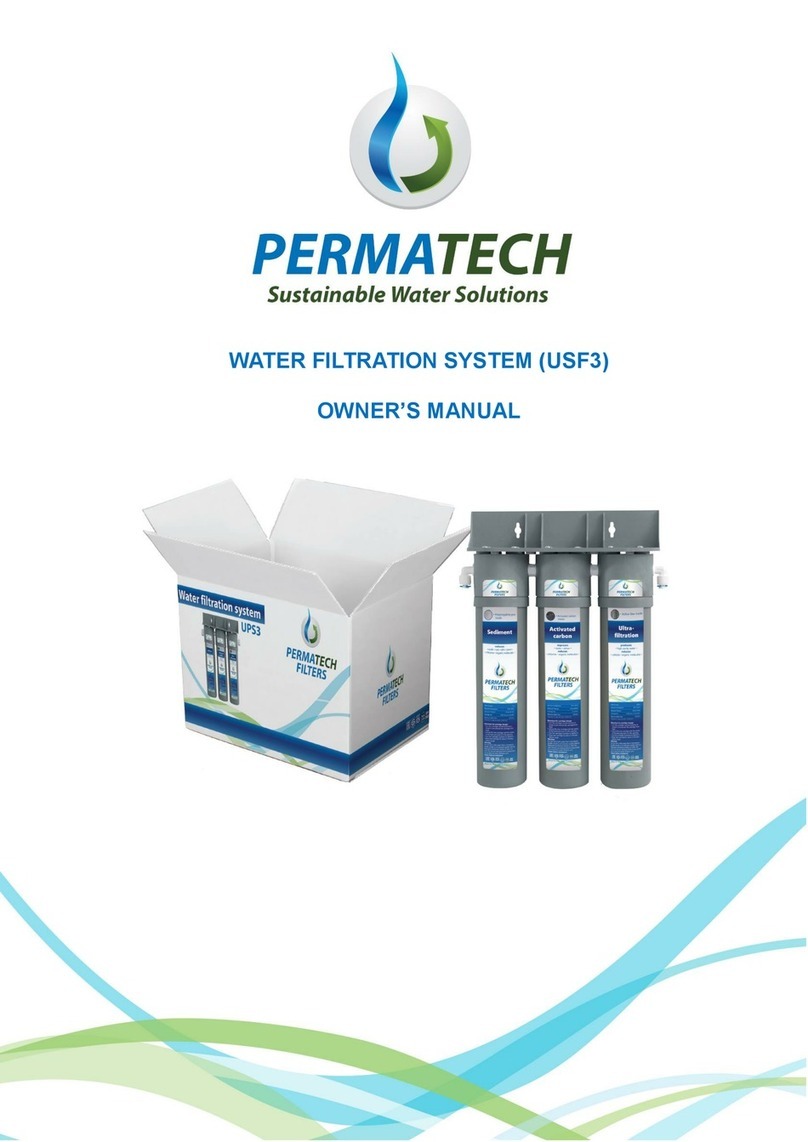3. HOW YOUR RO SYSTEM WORKS?
Connection scheme and the list of parts of the filtration system are on page 17.
Prefilter Heavy duty Sediment cartridge
Water from the cold water supply pipe enters the filter through sediment cartridge first. Sediment cartridge is
the best solution to remove mechanical impurities such as: sand, fluvial silt, rust and other sediments that you
may or may not be able to see in your water.
Prefilter Sediment & activated carbon cartridge
Activated carbon removes chlorine and its derivatives, lead, toxic metals construction, pesticides, detergents,
phenols and organic compounds. Twine polypropylene removes minor mechanical impurities.
Reverse Osmosis Membrane
The RO membrane is a tightly wound special membrane. The membrane removes the dissolved solids such as
calcium carbonate, chlorides, nitrates etc. and organic matter when the water is forced through the cartridge.
High quality product water exits the RO cartridge and goes to the storage tank or to the postfilter and RO faucet.
Rejected water with the dissolved solids and organic matter is routed through the flow control valve and to the
drain.
Postfilter Activated carbon cartridge
Activated carbon cartridge improve taste and smell of water.
Postfilter mineralizing cartridge
Mineralizing cartridges saturate water with mineral salt ions. The appropriate dissipation of minerals contained
in the cartridge filling causes their dissolution in water.
StorageTank
The storage tank will hold pure water. A diaphragm inside the tank keeps the water pressurized to about 2,6 bar,
when the tank is full. This pressure provides a fast flow to the RO faucet. The tank, when empty is pressurized
to 5-7psi (0,3-0,5 Bar).
Automatic shut-off valve
To conserve water, this drinking water system has an automatic shut-off valve system. When the storage tank
is filled to capacity and the RO faucet is closed, pressure closes the shut-off valve to stop the flow to drain.
Pressure in the storage tank is about half of the water supply pressure. Alter drinking water is used, and pressure
in the system drops, the shut-off valve opens to allow water to flow again.




























